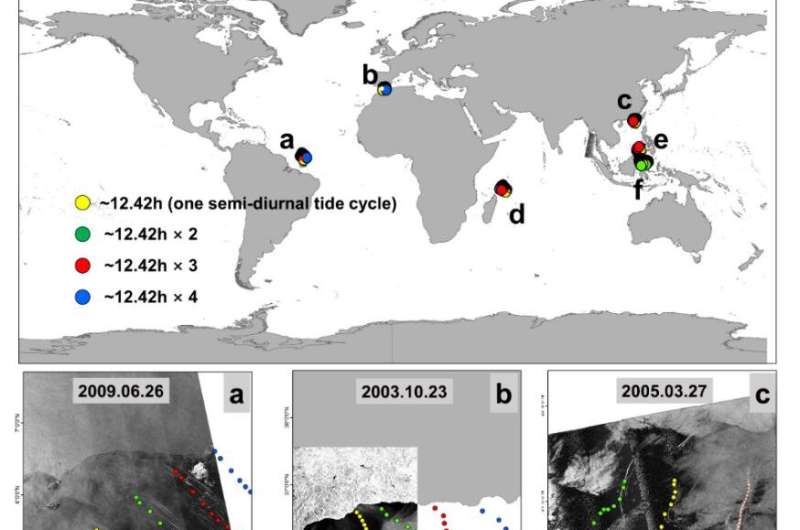New method enables global internal solitary wave propagation forecast in global oceans

Internal solitary waves (ISWs) are widely distributed in global oceans, and their propagation is affected by complicated environmental factors.
Satellite remote sensing images are the main data source for ISW study due to their large coverage and frequent revisiting time. However, the number of satellite images containing ISW signatures is still far from being able to cover the globe.
Recently, a research team led by Prof. Li Xiaofeng from the Institute of Oceanology of the Chinese Academy of Sciences (IOCAS) has proposed a novel method that couples physical mechanisms and artificial intelligence algorithms for ISW propagation forecast in global oceans.
Their study was published in Remote Sensing of Environment on Oct. 27.
The researchers collected a global dataset covering 13 ISW hotspots. Analysis of the built dataset revealed the relationship between ISW propagation speed and tidal information on a global scale for the first time. ISW propagation speed variations showed good correlation with the spring and neap tides.
They adopted the clustering algorithm to solve the ISW sample geographical imbalance problem, and incorporated the ISW physical mechanism into the model-building process.
"The proposed ISW speed model can be applied to study long-term ISW speed characteristics and it showed superior performance at different water depth ranges," said Dr. Zhang Xudong, first author of the study.
The continuous density stratification in the ocean was considered in the model in contrast to the traditional two-layer ocean stratification assumption. "It can also reveal ISW propagation characteristics and how the changing ocean stratification will influence the ISW propagation," said Prof. Li.
More information: Xudong Zhang et al, Satellite data-driven and knowledge-informed machine learning model for estimating global internal solitary wave speed, Remote Sensing of Environment (2022). DOI: 10.1016/j.rse.2022.113328
Provided by Chinese Academy of Sciences




















